#belogradchik rocks
Photo
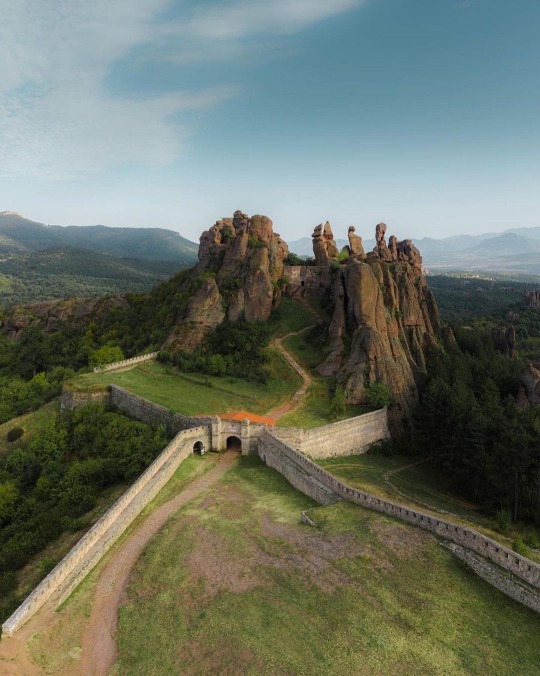
Belogradchik Rocks // Balkan // Bulgaria
#belogradchik rocks#belogradchik#Sofia#Varna#Plovdiv#BG#Balkan#Bulgaria#Nature#Rocks#Rocky mountains#mountains#Travel#Trip#Tourism#Walk#Must See#Bulgara Realty
110 notes
·
View notes
Text

#philately#ephemera#postage stamp#vintage#vintage stamps#snail mail#stamp collecting#1954#bulgaria#bulgaria stamps#belogradchik rocks#varna beach#travel
1 note
·
View note
Note
The Belogradchik Rocks, Belogradchik, Bulgaria

8 notes
·
View notes
Text
Vidin and Belogradchik
We didn't have an excursion until after lunch. The first stop was the local fortress along the river in Vidin and the rose garden outside it.


Like most of the fortresses in this area, the foundations are Roman and the walls have old Bulgarian, Ottoman, and later Bulgarian sections. But it's really not very interesting. Basically a stone garrison.

The interesting stop was about an hour away in Belogradchek. Belogradchek means little white town and the walls are generally white which contrasts nicely with the sandstone in the area.

Above the town is a large sandstone outcropping, that was used as a natural fortress and then reinforced with walls by the Romans, etc.
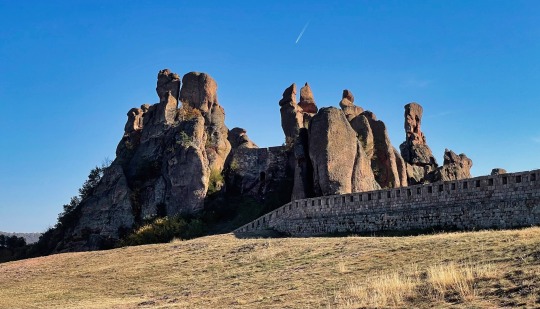
There's a series of gates into the expanded sections before getting to the rock fortress.



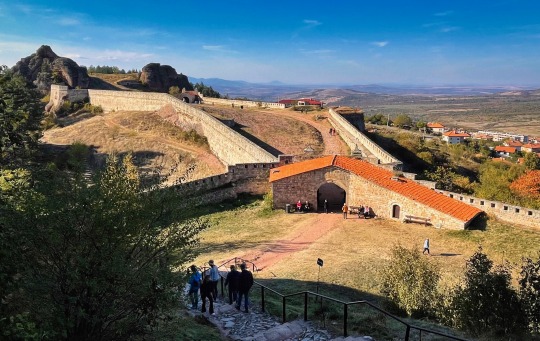


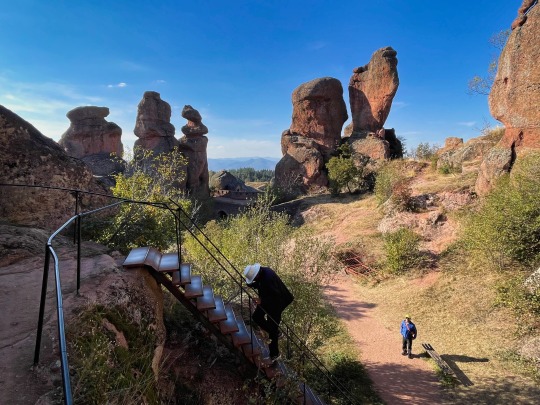
When you finally get to the top there are great views.
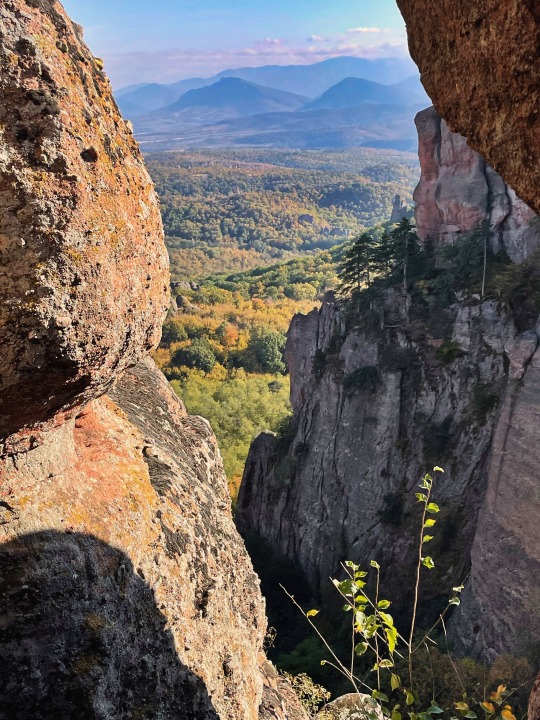


It's a great natural fortress and a good expansion of it to provide space for troops, horses, and supplies in normal times.
The day ended with a show of Bulgarian folk dance in the lounge. We ended up sitting behind the dancers, so I'm not showing photos of the dancing, just this one of the dancers.

Overnight the time changed from Eastern Europe to Central Europe. But the dividing line is down the middle of the river, so our phones kept switching depending on the cell tower we were closest to. I switched my phone to a manual time zone. We will be in this time zone until we are on the flight home, so no need to worry about it for a while.
1 note
·
View note
Video
youtube
Белоградчишките скали / Belogradchik Rocks
0 notes
Text
Elon Musk fever in EU's poorest country Bulgaria in anticipation of his visit
Elon Musk fever in EU’s poorest country Bulgaria in anticipation of his visit
An off the cuff tweet by Elon Musk has left Bulgarians over the moon, hoping the world’s richest man may be planning to visit the EU’s poorest region.
The Tesla, SpaceX and now Twitter boss – who is not immune to bouts of online whimsy – recently commented on an image of the towering Belogradchik Rocks in north-western Bulgaria under menacing clouds.
“Pretty sure that was in Elden Ring,” Musk…

View On WordPress
0 notes
Text
Tweet Sparks Elon Musk Fever In Eupore's Poorest Corner
Tweet Sparks Elon Musk Fever In Eupore’s Poorest Corner
“Pretty sure that was in Elden Ring,” Elon Musk tweeted.
Bulgaria:
An off the cuff tweet by Elon Musk has left Bulgarians over the moon, hoping the world’s richest man may be planning to visit the EU’s poorest region.
The Tesla, SpaceX and now Twitter boss — who is not immune to bouts of online whimsy — recently commented on an image of the towering Belogradchik Rocks in northwestern Bulgaria…

View On WordPress
0 notes
Text
Tweet Sparks Elon Musk Fever In Eupore's Poorest Corner
Tweet Sparks Elon Musk Fever In Eupore’s Poorest Corner
“Pretty sure that was in Elden Ring,” Elon Musk tweeted.
Bulgaria:
An off the cuff tweet by Elon Musk has left Bulgarians over the moon, hoping the world’s richest man may be planning to visit the EU’s poorest region.
The Tesla, SpaceX and now Twitter boss — who is not immune to bouts of online whimsy — recently commented on an image of the towering Belogradchik Rocks in northwestern Bulgaria…

View On WordPress
0 notes
Photo
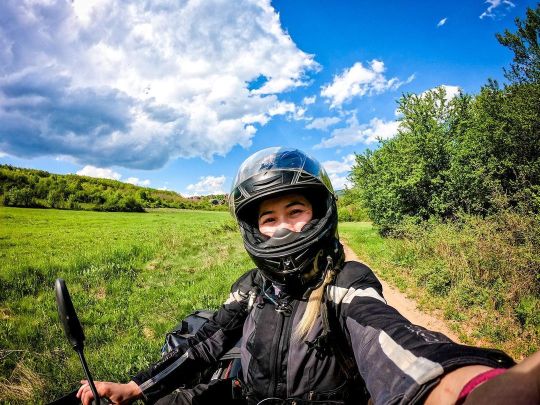
We’re getting braver and braver. As I was leaving the village of Belogradchik, I saw these beautiful red rocks in the distance. I thought, why don’t I ride there? As I turned off the main road which was asphalt, the road became gravel, which later became dried mud which then turned into sand. Okay. My first time riding in sand. Super soft, tires just sink and veer wherever they want. So sketchy. As I was getting the hang of it, trees started to surround me and there were more and more forks in the road. Having a bad memory, I decided not to go further as I didn’t want to get lost. Baby steps and adding more and more off roading experience under my belt. Small steps eventually turn to big strides when we turn back and see how far we’ve come. Happy Wednesday y’all. Be good #chasingcrystal #asianwomen #wheretheroadends #motodistancing #offroadinglife #dualsportlife #belogradchik #bulgarianature (at Belogradchik) https://www.instagram.com/p/ChFfFS9LMoK/?igshid=NGJjMDIxMWI=
#chasingcrystal#asianwomen#wheretheroadends#motodistancing#offroadinglife#dualsportlife#belogradchik#bulgarianature
1 note
·
View note
Text

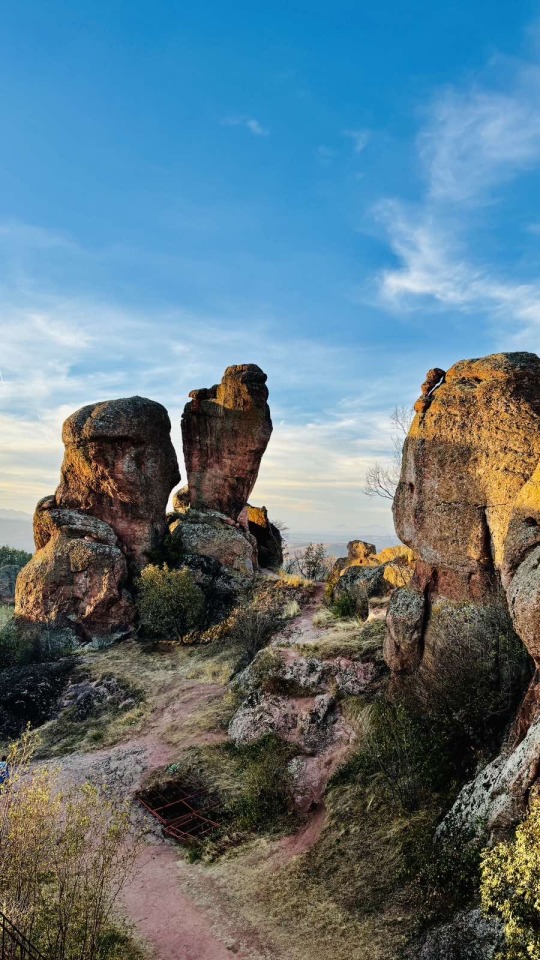



Belogradchik Rocks // Balkan // Bulgaria
#bulgaria#bg#bulgara realty#balkan#trip#travel#belogradchik rocks#belogradchik#rocky mountains#mountain#mountains#bulgarian#walk#nature
6 notes
·
View notes
Photo

From Mihailovgrad
Continue along E-79 and 53 km from Mihailovgrad turn left to Belogradchik. Nearby is one of Bulgaria’s interesting natural phenomena — the Belogradchik Rocks. A French traveller in 1841 wrote about this unique world of rocks; ‘We left Belogradcliik and an undreamt of landscape burst upon us. We wandered among intertwining gorges surrounded by scarlet rocks of most bizarre shapes. These solitary rocks or groups of rocks were now like Egyptian obelisks, now like enormous stalagmites, or resembled animals, ships or houses… The famous Oliul gorges in Provence, the Pancorbo defile in Spain, the Alps, the Pyrenes the oldest mountains in Tyrol or Switzerland — all these are incomparable with what I saw near Belogradchik in Bulgaria.’ The rocks cover an area 30 km long and 3 km wide. In the 1st century the Romans built a fortress among the rocks, which guarded the road between Ratsiaria (present-day Archar) on the Danube and Naisus (Nis) on the Nishava. This fortress is associated with the unsuccessful uprising in North-west Bulgaria in 1850; Russian liberating troops in 1878 participants of the 1923 Uprising and partisans in 1943-1944 have all passed this way. In the town of – gradchik (pop. 7,300) is a Hotel Bclogradchik Rocks, two stars, accommodating 134 (tel. 31-51), Narcoop hotel — 70 beds, a tourist hostel — 160 and the Madonna camping site with 40 beds in bungalows,
Magoura Cave
Back to the E-79 and before reaching Dimovo turn left towards the village of Rabisha. A solitary unwooded hill, Magou- ra, towers over Rabisha lake. On its southern slope is the entrance to the world-famous Magoura Cave. For millions of years water has moulded the soft limestone rocks, creating a spacious underground world. The cave is well-appointed, with electricity, convenient staircases and paths leading to underground passages. Remains of clay vessels, animal bones sofia daily tours, fireplaces and iron objects were found in the cave, showing that it was inhabited as far back as the 3rd millennium B.C. The most interesting thing here are the rock drawings in the cave’s left branch, some 200 m from the entrance. Though opinions differ, the most recent archaeological finds date them back to the beginning of the Bronze Age (2,700 B.C.).
Returning to the main road, continue towards Vidin (58,000), situated on the Danube. This is one of Bulgaria’s oldest towns. The Celts built a settlement here called Douponia in the 3rd century B.C. On its ruins the Romans built the Bonnonia fortress. During the Middle Ages the town was known as Bdin. In 1371 Ivan Sratsimir, son of Tsar Ivan Alexander, declared himself an independent ruler of the Vidin Kingdom. Bdin of the Middle Ages was an important trading centre — to its port came goods from Wallachia, Hungary and Dubrovnik. Scripts from those times have come down to us — a gospel kept in the British Museum in London, and the Bdin Collection — in the library of Ghent, Belgium. Many uprisings began here in the 19tb century, the most important of which was the great peasant uprising of 1850. Vidin was liberated from Ottoman domination by troops of the west Romanian corps on February 24, 1878. Today the town is a major administrative, industrial and cultural centre. The town is the cultural centre of North-West Bulgaria, with a drama theatre, philharmonic orchestra, art gallery, history museum, library club founded as early as 1870, cinemas, etc.
1 note
·
View note
Photo

Kozhouh in the Kozhouh Mountains
The warm climate, the curative properties of the waters and the beautiful scenery have contributed to the development of Petrich as a resort. There are good sport facilities in winter, used by both Bulgarian and foreign athletes. The mineral waters gush forth from springs in the extinct volcano, Kozhouh in the Kozhouh Mountains. It lies 10 kilometres from Petrich. Part of the mountains have been declared a national park. The waters have high mineral content and hyper- theimal properties (77°C). They are used to treat arthritis and diseases of the peripheral nervous system.
The Bulgaria Hotel — (two star), run by Balkantourist, is in the centre of the town. It has 160 beds and a restaurant.
The ruins of the ancient town of Petra can be seen on the slopes of the Kozhouh. Foundations of public buildings and parts of a fortress wall have been preserved. Fifteen kilometres west of Petrich is the Samouil Fortress Park and Monument, between the mountains of Belassitsa and Ogtazhden. Remains of walls where battles were waged between Bulgarian troops and the Byzantine Emperor Basil II are still visible.
Thirteen kilometres from Petrich is the Koulata frontier check point. There is a restaurant, motel, camping site, food kiosk and Corecom shop.
SOFIA – NOVI ISKUR – SVOGE – LAKATNIK – MEZ- DRA – VRATSA – Mil IAILOVGRAD – BELOGRADCHIK – VIDIN – KOULA
The town of Vidin can be reached by three routes. The first is through the Vitinya Pass and north through Botevgrad and Vratsa, the second is through the Petrohan Pass, Berko- vitsa and Mihailovgrad, and the third passes through the picturesque Isker Gorge. We start from the north industrial region of Sofia. The first town we reach is Novi Isker (pop. 15,000) 17 km from Sofia, at the entrance to the Iskur Gorge. A few kilometres west are the Kutina pyramids, rock formations situated at the foot of the Sofiiska mountain. The Iskur Gorge begins from Novi Iskur and is most picturesque up to the village of Lyutibrod. It was formed by the erosion caused by the waters of the River Iskur.
Village of Bov
Between Novi Iskur and the village of Bov, the river passes among friable rocks, the gorge is wide with well-cut terraces. Sheer rocks loom large on both sides, some 250 m high, and the gorge resembles a canyon. The village of Vlada Trichkov is next with 1,600 inhabitants sofia city tour. It is named after a partisan leader. The village of Rebrovo(pop. 1,500) is situated at the source of the River Batulirska in the Iskur. Four kilometres away is Batuliya where on May 23rd 1944, partisan units battled with the gendarmerie. Many heroes of the National Liberation Army were captured and killed during the days that followed, including Major William Frank Thompson, member of the British mission to the Bulgarian partisans. The small railway station bears his name.
Svoge is the largest town in the gorge — (pop. 8,200). It is a centre for coal-mining and food industry. The nearby village of Iskrets (2,700) has sanatoria for TB and heart disorder sufferers. The sheer rocky slopes of the Lakatnik Karst area just opposite Lakatnik railway station provide excellent opportunities for mountaineering. Perched high on a rock like a squirrel’s nest is a small Alpine chalet. Not far away is a monument to the rebels shot down after the defeat of the September 1923 anti-fascist uprising, A veritable kingdom of caves begins here. The.well-known Temnata Doupka cave is some three kilometres long; an underwater river flows through it, forming several lakes, and finally surfacing. The Mechata Doupka cave is 480 km in length.
0 notes
Photo

A COUNTRY OF INTERNATIONAL TOURISM
BULGARIA – A COUNTRY OF INTERNATIONAL TOURISM
Although Bulgaria has become a country for international holidays only in the past twenty years, it is visited by more than six million tourists annually. In recent years, the rate of development of international tourism in Bulgaria has exceeded all world rates. With every passing year the number of tourists visiting the country increases by 10-15%. This is not accidental as every attention is given to tourism: modem facilities, simplified passport and visa formalities, advantageous exchange rates, etc. However, there is more to it. Bulgaria is one of the few countries in the world which has such a diversity of attractions. The Bulgarian Black Sea coast is a happy combination of geographic and climatic conditions: warm, transparent water with insignificant tides, a coastline lined by luscious vegetation, long beaches with fine golden sand, quiet shallow coves, sunny weather and moderate humidity.
There are many modern resorts — Roussalka, Albena, Zlatni Pyassatsi, Drouzhba, Slunchev Bryag and Kamchiya, all with hotels, bars and entertainment daily tours istanbul. Romantically minded tourists will discover quiet, deserted coves with secluded beaches all along the coast.
Pamporovo in the Rhodopes
No less attractive are the mountain resorts of Pamporovo in the Rhodopes, Borovets and Malyovitsa in the Rila Mountain, Vitosha on Mount Vitosha near Sofia. These are popular all the year round, but especially for winter sports. Those who need spa treatment may choose between Hxssar, Kyustendil, Barikya, Velingrad, Narechen, Sandanski, Vurshets, Zlatni Pyassatsi and Drouzhba.
Ancient monuments vie with natural wonders, such as the Belogradchik rocks, the Stone Forest near Varna, the stone bridges in the Rhodopes, the Isker gorge, the Melnik pyramids, the picturesque caves of Magoura, Ledenika, Sueva Doupka, Bacho Kiro, the mouth of the Ropotamo river, etc., etc.
Tourists find the diverse wealth of Bulgarian folklore very attractive and songs, dances and rituals are performed by the many music and dance ensembles at festivals all over the country.
Each year from 3rd to 7th June, the Black Sea resort of Slunchev Bryag plays host to the Golden Orpheus international pop song festival; the 15th to 25th June period is devoted to the Decade of Symphonic Music, while a competition of folk ensembles, both Bulgarian and foreign, takes place in Bourgas from 1st August to August 10th every year. There is an international choir competition in May in Varna, and in July, the Varna Summer festival has opera performances, symphony concerts and chamber music.
The world famous ballet Competition, first staged in 1964, is held here every two years. Plovdiv, Bulgaria’s second largest town, hosts the International Chamber Music Festival in June. The Sofia Music Week opens on 24 May each year and the programme includes symphony concerts, cantatas, oratorios and chamber music. Music Days are held every March in Rousse with symphonic concerts, opera performances and choral singing concerts. Pleven has the Katya Popova Laureate Days at the end of October in which young Bulgarian and foreign singers and instrumentalists, who were awarded priz.es at international competitions, perform to Bulgarian audiences. Late in May and in early June the blossoming of roses is “celebrated in Karlovo and Kazanluk, in the so called Valley of Roses.
0 notes
Photo
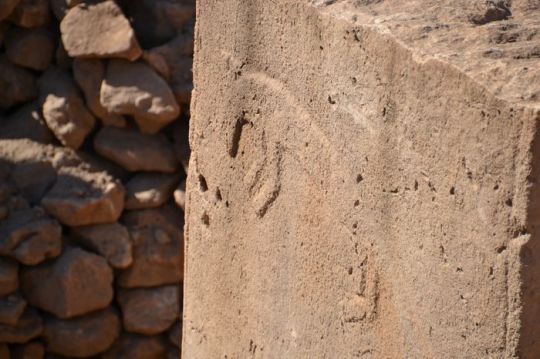
A COUNTRY OF INTERNATIONAL TOURISM
BULGARIA – A COUNTRY OF INTERNATIONAL TOURISM
Although Bulgaria has become a country for international holidays only in the past twenty years, it is visited by more than six million tourists annually. In recent years, the rate of development of international tourism in Bulgaria has exceeded all world rates. With every passing year the number of tourists visiting the country increases by 10-15%. This is not accidental as every attention is given to tourism: modem facilities, simplified passport and visa formalities, advantageous exchange rates, etc. However, there is more to it. Bulgaria is one of the few countries in the world which has such a diversity of attractions. The Bulgarian Black Sea coast is a happy combination of geographic and climatic conditions: warm, transparent water with insignificant tides, a coastline lined by luscious vegetation, long beaches with fine golden sand, quiet shallow coves, sunny weather and moderate humidity.
There are many modern resorts — Roussalka, Albena, Zlatni Pyassatsi, Drouzhba, Slunchev Bryag and Kamchiya, all with hotels, bars and entertainment daily tours istanbul. Romantically minded tourists will discover quiet, deserted coves with secluded beaches all along the coast.
Pamporovo in the Rhodopes
No less attractive are the mountain resorts of Pamporovo in the Rhodopes, Borovets and Malyovitsa in the Rila Mountain, Vitosha on Mount Vitosha near Sofia. These are popular all the year round, but especially for winter sports. Those who need spa treatment may choose between Hxssar, Kyustendil, Barikya, Velingrad, Narechen, Sandanski, Vurshets, Zlatni Pyassatsi and Drouzhba.
Ancient monuments vie with natural wonders, such as the Belogradchik rocks, the Stone Forest near Varna, the stone bridges in the Rhodopes, the Isker gorge, the Melnik pyramids, the picturesque caves of Magoura, Ledenika, Sueva Doupka, Bacho Kiro, the mouth of the Ropotamo river, etc., etc.
Tourists find the diverse wealth of Bulgarian folklore very attractive and songs, dances and rituals are performed by the many music and dance ensembles at festivals all over the country.
Each year from 3rd to 7th June, the Black Sea resort of Slunchev Bryag plays host to the Golden Orpheus international pop song festival; the 15th to 25th June period is devoted to the Decade of Symphonic Music, while a competition of folk ensembles, both Bulgarian and foreign, takes place in Bourgas from 1st August to August 10th every year. There is an international choir competition in May in Varna, and in July, the Varna Summer festival has opera performances, symphony concerts and chamber music.
The world famous ballet Competition, first staged in 1964, is held here every two years. Plovdiv, Bulgaria’s second largest town, hosts the International Chamber Music Festival in June. The Sofia Music Week opens on 24 May each year and the programme includes symphony concerts, cantatas, oratorios and chamber music. Music Days are held every March in Rousse with symphonic concerts, opera performances and choral singing concerts. Pleven has the Katya Popova Laureate Days at the end of October in which young Bulgarian and foreign singers and instrumentalists, who were awarded priz.es at international competitions, perform to Bulgarian audiences. Late in May and in early June the blossoming of roses is “celebrated in Karlovo and Kazanluk, in the so called Valley of Roses.
1 note
·
View note
Photo
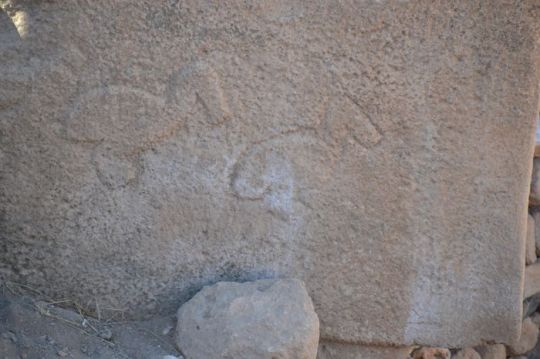
Kozhouh in the Kozhouh Mountains
The warm climate, the curative properties of the waters and the beautiful scenery have contributed to the development of Petrich as a resort. There are good sport facilities in winter, used by both Bulgarian and foreign athletes. The mineral waters gush forth from springs in the extinct volcano, Kozhouh in the Kozhouh Mountains. It lies 10 kilometres from Petrich. Part of the mountains have been declared a national park. The waters have high mineral content and hyper- theimal properties (77°C). They are used to treat arthritis and diseases of the peripheral nervous system.
The Bulgaria Hotel — (two star), run by Balkantourist, is in the centre of the town. It has 160 beds and a restaurant.
The ruins of the ancient town of Petra can be seen on the slopes of the Kozhouh. Foundations of public buildings and parts of a fortress wall have been preserved. Fifteen kilometres west of Petrich is the Samouil Fortress Park and Monument, between the mountains of Belassitsa and Ogtazhden. Remains of walls where battles were waged between Bulgarian troops and the Byzantine Emperor Basil II are still visible.
Thirteen kilometres from Petrich is the Koulata frontier check point. There is a restaurant, motel, camping site, food kiosk and Corecom shop.
SOFIA – NOVI ISKUR – SVOGE – LAKATNIK – MEZ- DRA – VRATSA – Mil IAILOVGRAD – BELOGRADCHIK – VIDIN – KOULA
The town of Vidin can be reached by three routes. The first is through the Vitinya Pass and north through Botevgrad and Vratsa, the second is through the Petrohan Pass, Berko- vitsa and Mihailovgrad, and the third passes through the picturesque Isker Gorge. We start from the north industrial region of Sofia. The first town we reach is Novi Isker (pop. 15,000) 17 km from Sofia, at the entrance to the Iskur Gorge. A few kilometres west are the Kutina pyramids, rock formations situated at the foot of the Sofiiska mountain. The Iskur Gorge begins from Novi Iskur and is most picturesque up to the village of Lyutibrod. It was formed by the erosion caused by the waters of the River Iskur.
Village of Bov
Between Novi Iskur and the village of Bov, the river passes among friable rocks, the gorge is wide with well-cut terraces. Sheer rocks loom large on both sides, some 250 m high, and the gorge resembles a canyon. The village of Vlada Trichkov is next with 1,600 inhabitants sofia city tour. It is named after a partisan leader. The village of Rebrovo(pop. 1,500) is situated at the source of the River Batulirska in the Iskur. Four kilometres away is Batuliya where on May 23rd 1944, partisan units battled with the gendarmerie. Many heroes of the National Liberation Army were captured and killed during the days that followed, including Major William Frank Thompson, member of the British mission to the Bulgarian partisans. The small railway station bears his name.
Svoge is the largest town in the gorge — (pop. 8,200). It is a centre for coal-mining and food industry. The nearby village of Iskrets (2,700) has sanatoria for TB and heart disorder sufferers. The sheer rocky slopes of the Lakatnik Karst area just opposite Lakatnik railway station provide excellent opportunities for mountaineering. Perched high on a rock like a squirrel’s nest is a small Alpine chalet. Not far away is a monument to the rebels shot down after the defeat of the September 1923 anti-fascist uprising, A veritable kingdom of caves begins here. The.well-known Temnata Doupka cave is some three kilometres long; an underwater river flows through it, forming several lakes, and finally surfacing. The Mechata Doupka cave is 480 km in length.
0 notes
